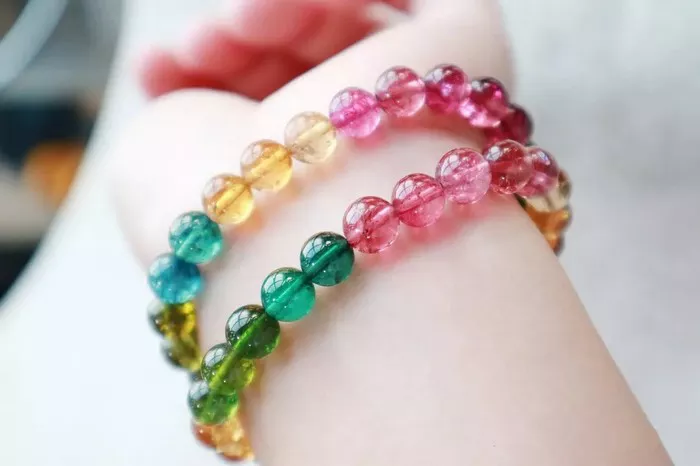When it comes to gemstones, green tourmaline and emerald often find themselves in the spotlight. Both are beautiful, vibrant green stones, but they have significant differences in terms of composition, value, and price. In this article, we’ll explore these two stunning gems, helping you understand their unique qualities and what influences their prices.
Understanding Green Tourmaline
What is Green Tourmaline?
Green tourmaline, part of the tourmaline family, is a silicate mineral that comes in various colors, with green being one of the most popular. It’s known for its striking hues, ranging from light green to deep forest green. The name “tourmaline” comes from the Sinhalese word “turmali,” which means “mixed gemstones.”
Characteristics of Green Tourmaline
Color: The color of green tourmaline can vary greatly due to the presence of different minerals during its formation. Iron is primarily responsible for its green color.
Clarity: Green tourmaline can be found with excellent clarity, though some stones may contain inclusions.
Hardness: On the Mohs scale, green tourmaline rates a 7 to 7.5, making it durable enough for everyday wear.
Price Factors for Green Tourmaline
Several factors influence the price of green tourmaline:
Color: The most vibrant green shades fetch higher prices. Stones with uniform color and minimal zoning are especially prized.
Clarity: Cleaner stones without visible inclusions are more valuable.
Size: Larger stones are rarer and thus command higher prices.
Cut: Well-cut stones that maximize brilliance and color will have a higher market value.
As of recent trends, the price of green tourmaline can range from $300 to $1,200 per carat, depending on these factors.
Exploring Emeralds
What is an Emerald?
Emeralds are a variety of the mineral beryl, colored by trace amounts of chromium and sometimes vanadium. Known for their lush green color, emeralds have captivated gem lovers for centuries. The term “emerald” comes from the Greek word “smaragdos,” meaning green stone.
Characteristics of Emeralds
Color: Emeralds are renowned for their deep green color, often with a slightly bluish hue.
Clarity: Most emeralds have inclusions, referred to as “jardin,” which can affect their clarity. High-quality emeralds with few inclusions are very rare.
Hardness: Emeralds have a Mohs hardness of 7.5 to 8, making them suitable for various types of jewelry but requiring careful handling.
Price Factors for Emeralds
The price of emeralds is influenced by several key factors:
Color: The most valuable emeralds exhibit a vivid green color with good saturation. Stones that appear too dark or too light can be less desirable.
Clarity: While some inclusions are common in emeralds, those with minimal inclusions or eye-clean stones command a premium.
Size: As with most gemstones, larger emeralds are rarer and can be significantly more expensive.
Origin: Emeralds from specific locations, such as Colombia, are often considered more valuable due to their unique color and clarity characteristics.
Emerald prices can range from $500 to over $10,000 per carat, depending on the quality and factors mentioned.
A Direct Price Comparison
When comparing green tourmaline to emerald, the price disparity can be quite noticeable. Here’s a quick breakdown:
Green Tourmaline: $300 – $1,200 per carat
Emerald: $500 – $10,000+ per carat
Why the Price Difference?
Several reasons contribute to the price difference between these two gemstones:
Rarity: Emeralds, especially high-quality ones, are significantly rarer than green tourmaline. This rarity drives up their prices.
Cultural Significance: Emeralds have a long history and cultural significance, often associated with wealth and luxury. This perception adds to their value.
Market Demand: There is a strong demand for emeralds in high-end jewelry, while green tourmaline, although beautiful, does not have the same level of market recognition.
Choosing Between Green Tourmaline and Emerald
When deciding between green tourmaline and emerald, consider the following:
Purpose: If you’re looking for a gemstone for everyday wear, green tourmaline may be a better option due to its durability and lower price. Emeralds, while stunning, require more care and can be more expensive to replace if damaged.
Aesthetic Preference: Both stones have their unique beauty. If you prefer a vivid, luxurious green, emerald might be your choice. For a range of greens and more durability, green tourmaline could be more appealing.
Budget: Consider your budget. If you’re looking for a stunning green gem without breaking the bank, green tourmaline offers great value.
Conclusion
Both green tourmaline and emerald are exquisite gemstones, each with its unique charm and pricing structure. Green tourmaline offers a more affordable option for those wanting a vibrant green stone, while emeralds hold a prestigious place in the world of gemstones with their rich history and rarity. Understanding the differences in their prices can help you make an informed choice, whether you’re purchasing for yourself or as a gift. Ultimately, both gems can bring beauty and joy to any collection.
Related topic:
- How to Cleanse Pink Tourmaline?
- What Are Some Interesting Facts About Pink Tourmaline?
- How to Charge Black Tourmaline


